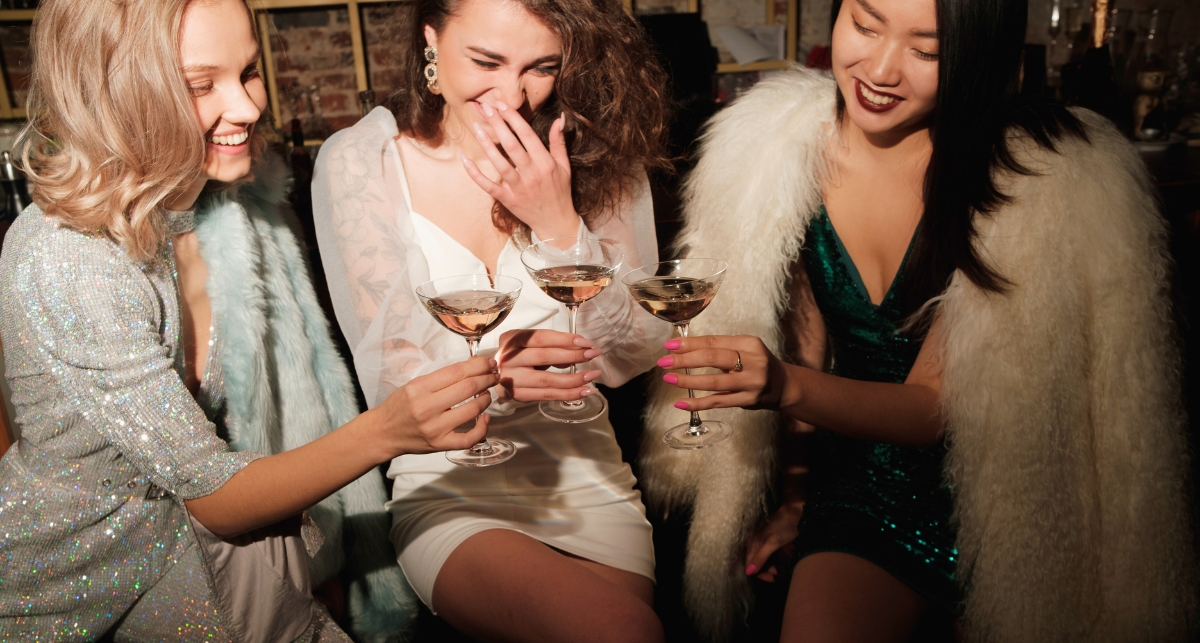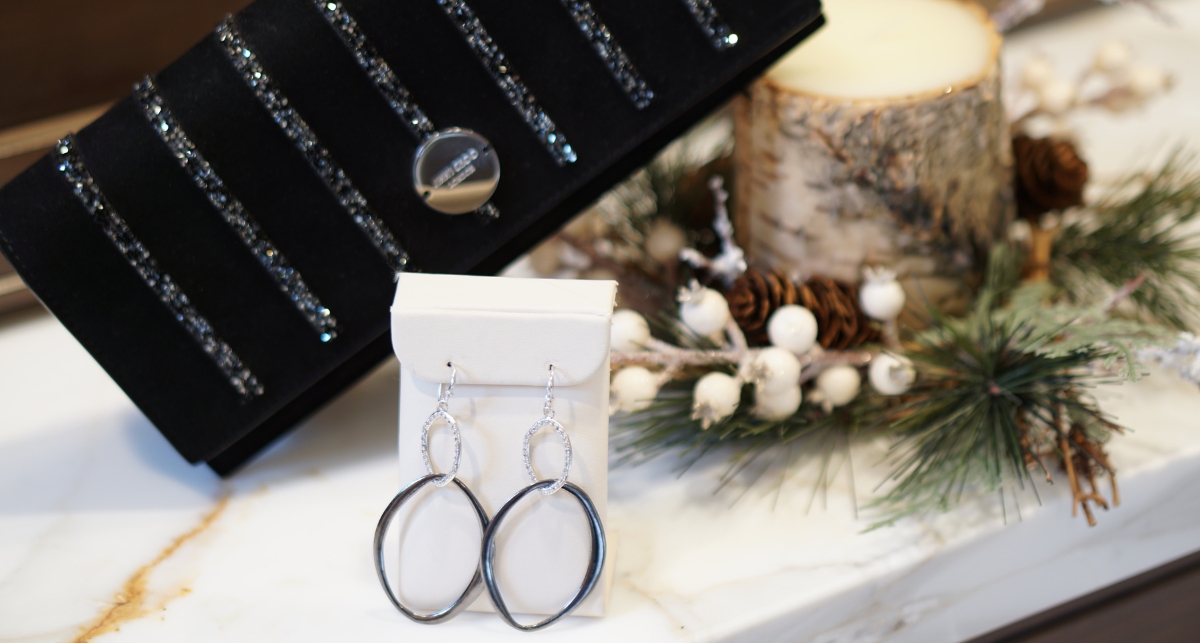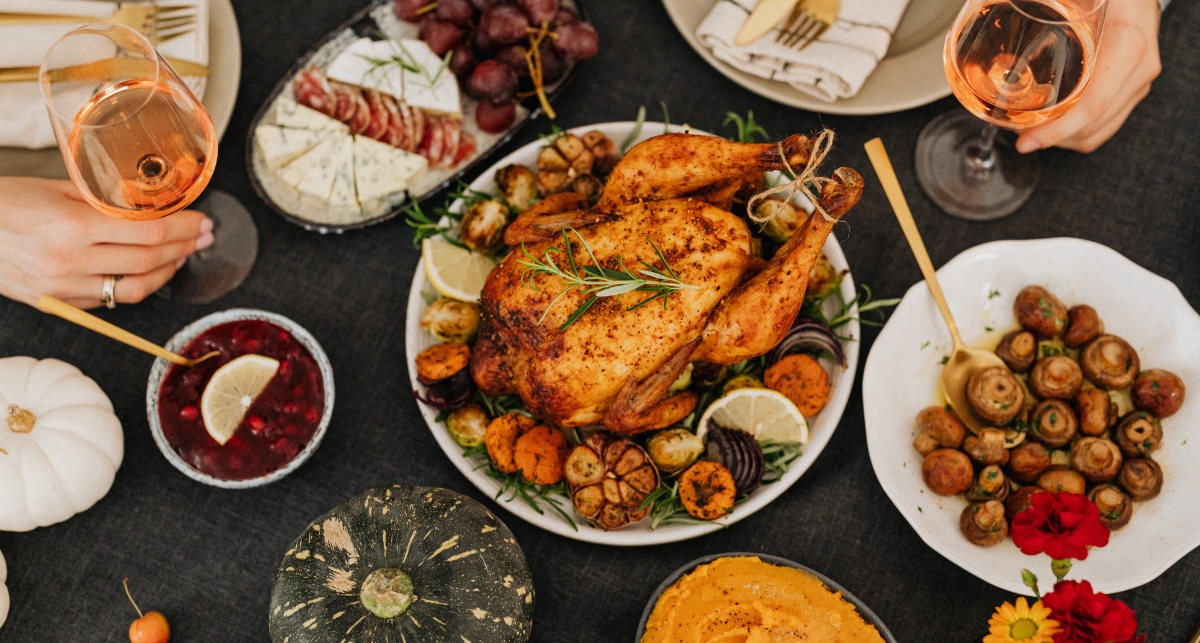Pilates Reformer exercises not only tone your physique, they can help you shed pounds and strengthen your muscles (all while having fun!). In addition to shaping your body, Pilates Reformer exercises are also great for improving your balance and posture, while strengthening and elongating your muscles.
In collaboration with fitness instructor Maddy Crouch (the owner of Physique Exercise Salon in Carmel-by-the-Sea, California), Inspirations & Celebrations recently launched a new 4-part fitness tutorial series called the “The Fit Physique Guide to Pilates Reformer”. In Part 1, Maddy shared upper body exercises that help us tone our arms and shoulders. Over the next few weeks, Maddy will share more inspiring Pilates Reformer exercises designed for the lower body, core, and prenatal women.
The Fit Physique Guide to Pilates Reformer: Part 2 – Lower Body Exercises
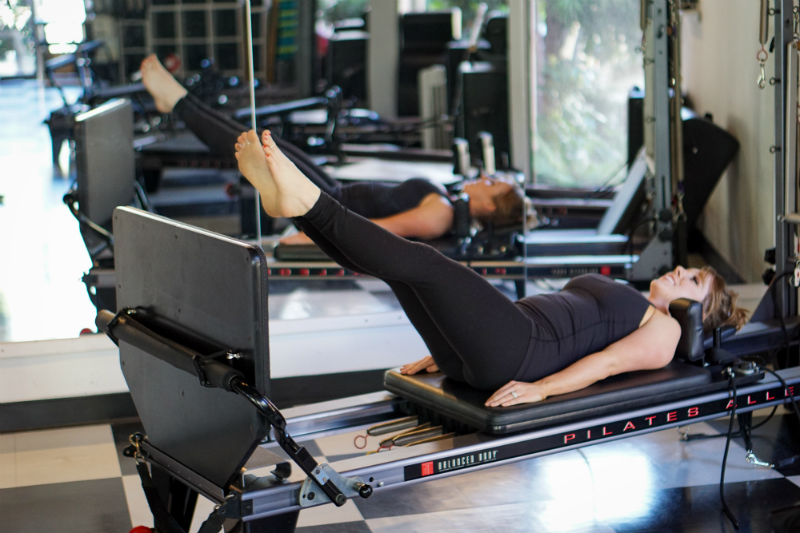
Pilates Reformer Exercise: Jumping with the jump board
We all want to be able to wear shorts or a dress and not feel self-conscious about our thighs, right? In order to tone thigh muscles, you have to feel the burn. But in order to lose fat on the legs, you have to burn calories. Using the Pilates Reformer jump board does both.
With a medium resistance, lying supine on your back, push off the jump board just like it sounds and jump! Similar to jumping up in the air, you want to start with the knees bent and then straighten the legs as your spring away from the board. This is surprisingly low impact as long as you land properly. You want to roll back onto your feet. Catching the board with the balls of your feet first then allow the heels to come down too. If you land on a flat foot it will jar the knees and hips. You also want to have soft legs when your feet hit the board. Starting to decrease your speed and bend into the landing will help you protect the knees and hips. While you are floating in the air mid-jump you’ll be working your core. And another thing I left out… you have to squeeze your glutes. Keep your core engaged will protect the back and keeping the glutes engaged will help you keep your core engaged. It all goes together!
We can jump and land in different foot positions to access different little muscles. If you want to get really fancy, you can do little dance like moves while you are in the air. Open and close the feet quickly while floating and you’ll work your inner thighs. After a few minutes of jumping, you’ll feel your quadriceps muscles working. Try to sustain 10-15 minutes of jumping, carrying the way you land. Some of the different foot positions you can land in are Small V, Wide V or even one foot at a time.
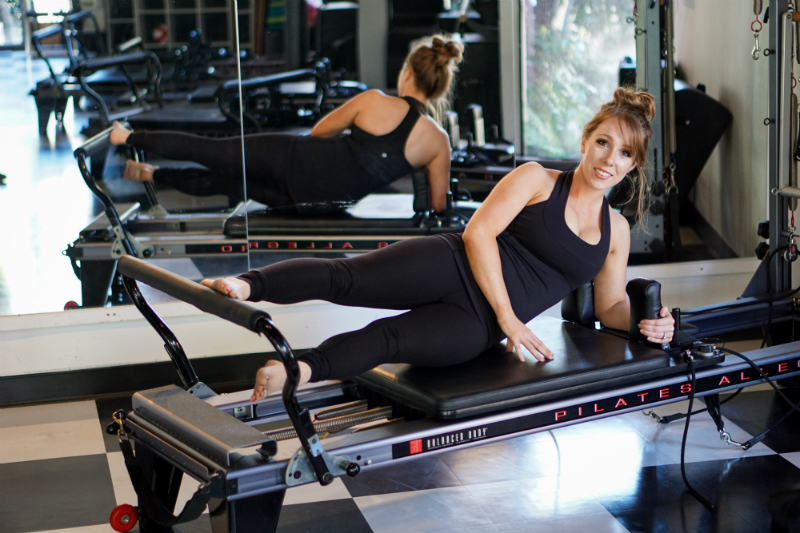
Pilates Reformer Exercise: Side-lying footwork
I think you will find many Pilates exercises are very similar just with a twist. You always want to try to work your muscles in different ways. Confusing the muscle promotes prefers. Just as you study and challenge your brain to learn new things.
Here we lie on our sides and work only one leg at a time. Singling our one side allows a potentially weaker side to work on its own and catch up. Make sure to support your upper body and keep the core engaged for stability. Also be east of keeping your knee and ankle in proper alignment as to not injure the knee. Push out on the foot bar straightening the leg and then bend the leg bringing the carriage back in. You’ll want a medium to heavy resistance here. There are a few different foot positions for this exercise. You can keep your foot flat on the bar or elevate the heel to focus more on the quadriceps. You can also externally rotate the leg and point your toes upward.
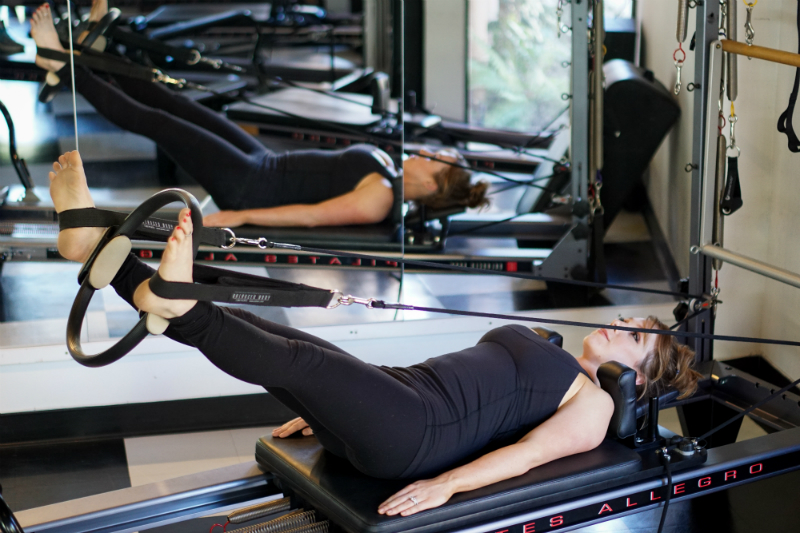
Pilates Reformer Exercises: Feet in the straps
It is very important to work all sides of the legs and keep a balance. Focusing on just one area could cause problems elsewhere in the body like the back.
This exercise works the back of the leg, your hamstrings. You’ll see in the photo I have added the magic circle between my ankles to also work inner thighs. Everyone loves this exercise because it can’t be easily replicated and the stretch at the top of the movement feels amazing. You’ll want a medium resistance, lying supine on your back and put both feet in the straps. Simply lower and lift the legs, pressing down against the resistance. If you have a magic circle, or even a ball, between your ankles, be sure to squeeze it to keep the inner thigh muscles engaged. If you don’t, you can keep your feet and legs together. Think about lengthening the legs as you press down through your feet. Keep your arms down by your sides to keep the neck and shoulders relaxed. Engage the core as the legs lower and once again squeeze the glutes. When your legs lift up you’ll feel a hamstring stretch, just be mindful of keeping a neutral spine and not allowing your tailbone to lift off the carriage.
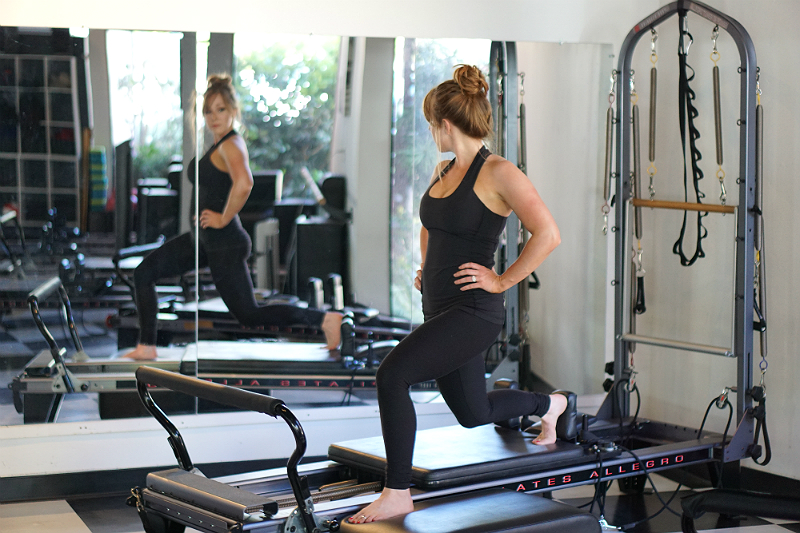
Pilates Reformer Exercise: Lunges with the box
When you think of exercises for your legs you think squats and lunges, right? Although this may not be a Joseph Pilates classical exercise, it still works to strengthen and define the legs.
Place your long box on the floor right next to the carriage. Use a light spring and stand with one foot on the box and your other foot against the shoulder pad. Very slowly and carefully push the carriage back, bending the knees and lowering down into a lunge position. Stay aware of your form and make sure your front knee is over the ankle. Due to the light spring, the carriage will push back easily. Focus your eyes on a stationary spot on the floor or wall in front if you to help you keep your balance as you work to stand up and bring the carriage in. The lighter the spring, the harder the standing leg will work. If you need some assistance bringing the carriage back in just add more resistance.
To challenge and fatigue the muscles, hold the lunge position and pulse up and down. Just a very small movement 2-3” up and down. You can also stay in this lunge and push the carriage leg in and out. The standing leg will stay bent and work to hold most of your body weight.

Pilates Reformer Exercise: Crescent Lunge
Remember when I said it’s good to work the muscles in a similar but slightly different way? We are going to lunge again but this time with our standing leg on the floor. You’ll want to keep a light resistance as you push the carriage back and lower down into a crescent lunge. What makes this exercise different is that you keep your back leg straight this time. Focus on bending down into your standing leg. Engage your core and hinge forward slightly to help keep the back leg straight. You will feel a stretch in the hip flexors of the carriage leg but you’ll feel glute and thigh of your standing leg working to hold your body weight up.
To challenge yourself, push back into this crescent pose position and hold. Think of yoga! Breathe deeply and feel your muscles start to tremble. Then, as a reward, rest your knee on the carriage for an incredible psoas stretch!
For more exercise tips and tutorials from fitness experts and celebrity trainers, check out the Fitness section on Inspirations & Celebrations. Be well and stay inspired on your fitness journey!
Fitness Contributor: Maddy Crouch
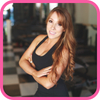 Maddy Crouch has been a Certified Pilates, Barre & TRX instructor since 2012. She opened her first studio (Physique Exercise Salon) in downtown Carmel-by-the-Sea, California just after graduating from college. Being an entrepreneur fulfilled her dreams, but helping others feeds her soul. Maddy is a new mom and gained a different appreciation for all that Pilates can do for the body when getting back into shape after having her son. As a fitness contributor to Inspirations & Celebrations, Maddy shares exercise and fitness tips to help you tone up, trim down, and get a fit physique.
Maddy Crouch has been a Certified Pilates, Barre & TRX instructor since 2012. She opened her first studio (Physique Exercise Salon) in downtown Carmel-by-the-Sea, California just after graduating from college. Being an entrepreneur fulfilled her dreams, but helping others feeds her soul. Maddy is a new mom and gained a different appreciation for all that Pilates can do for the body when getting back into shape after having her son. As a fitness contributor to Inspirations & Celebrations, Maddy shares exercise and fitness tips to help you tone up, trim down, and get a fit physique.








